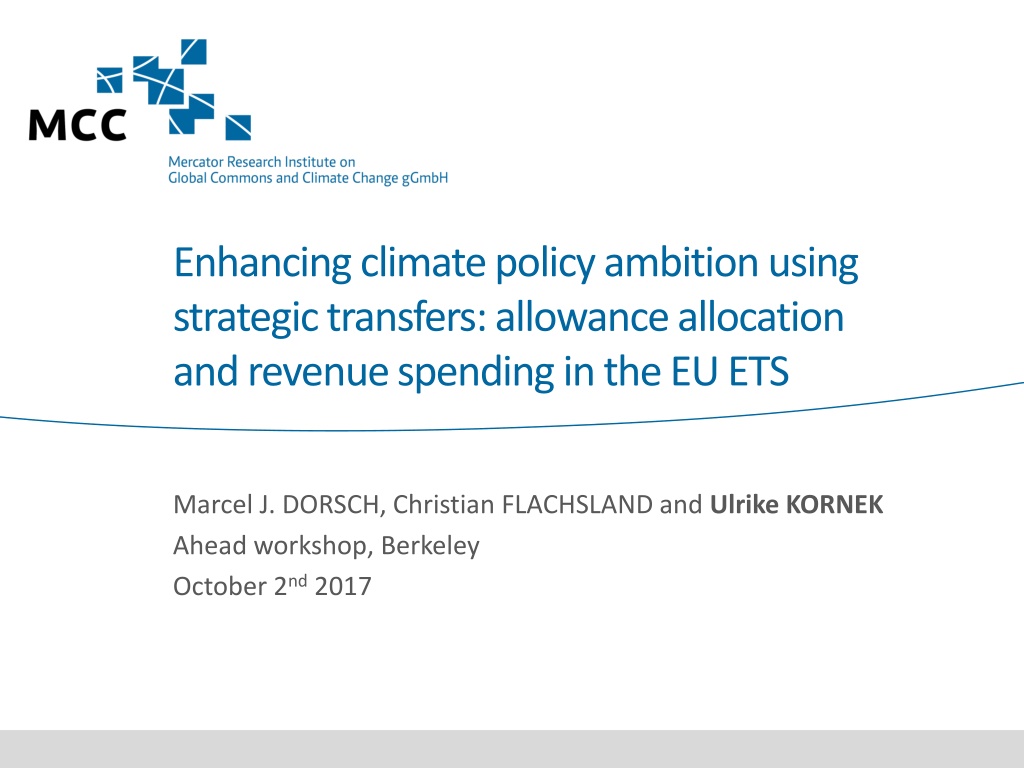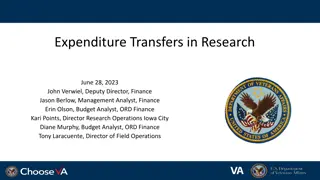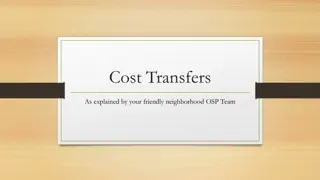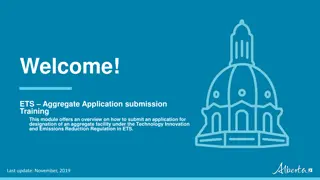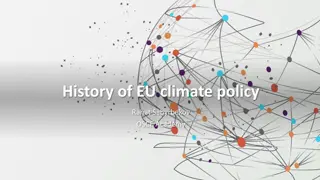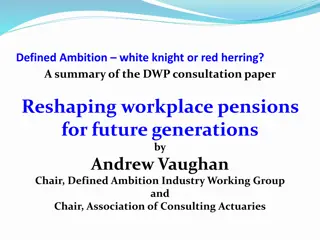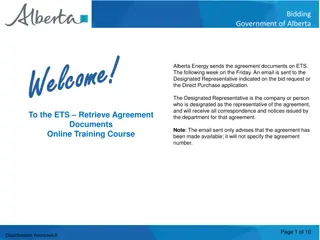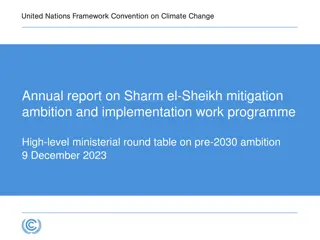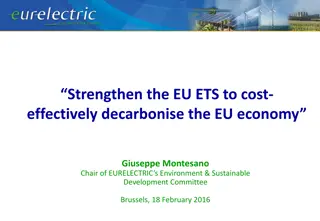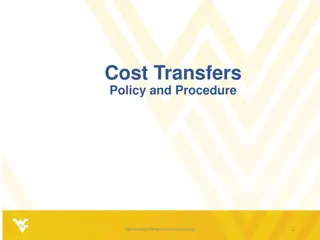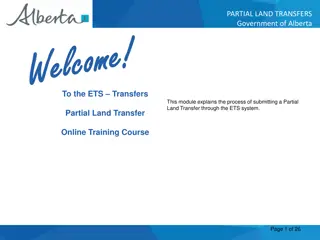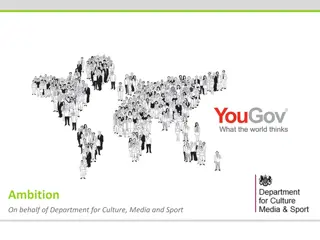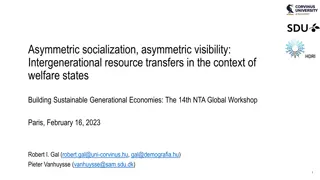Strategic Transfers for Enhancing Climate Policy Ambition in EU ETS
This study explores the use of strategic transfers, allowance allocation, and revenue spending in the EU ETS to enhance climate policy ambition. Motivated by the EU's goal of reducing emissions by 80% by 2050, the research delves into transfer decisions, cap-setting roles, challenges for decarbonization, and views on transfers. By analyzing both ex-post and ex-ante perspectives, the study aims to influence actors towards achieving decarbonization while considering winners and losers in the system.
Download Presentation

Please find below an Image/Link to download the presentation.
The content on the website is provided AS IS for your information and personal use only. It may not be sold, licensed, or shared on other websites without obtaining consent from the author. Download presentation by click this link. If you encounter any issues during the download, it is possible that the publisher has removed the file from their server.
E N D
Presentation Transcript
Enhancing climate policy ambition using strategic transfers: allowance allocation and revenue spending in the EU ETS Marcel J. DORSCH, Christian FLACHSLAND and Ulrike KORNEK Ahead workshop, Berkeley October 2nd2017
Outline 1. Motivation & Research Questions 2. 2 views on the use of transfers 3. Ex-post analysis of transfers in the EU-ETS Cap-Setting Allocation of Allowances Revenue Recycling a) b) c) 4. Ex-ante perspective 5. Conclusions 2
Motivation EU goal: reduce emissions by at least 80% until 2050 EU-ETS as flagship climate policy, shall be transformative Covers ~45% of EU Emissions Decarbonization towards 2060 Linear reduction factor: 1.74% p. a. Linear reduction factor: 2.2% p. a. 2.5 Emissions in G t CO2 2 1.5 ? 1 0.5 Phase III 0 2013 2018 2023 2028 2033 2038 2043 2048 2053 3
Motivation EU goal: reduce emissions by at least 80% until 2050 EU-ETS as flagship climate policy, shall be transformative Covers ~45% of EU Emissions Decarbonization towards 2060 How to influence both groups to achieve decarbonization? Linear reduction factor: 1.74% p. a. Brown actors Linear reduction factor: 2.2% p. a. 2.5 Emissions in G t CO2 2 Green actors 1.5 ? 1 0.5 Phase III 0 2013 2018 2023 2028 2033 2038 2043 2048 2053 4
Research Questions Questions: What kind of transfer decisions have been implemented? What role did and do transfers play for the cap setting? What are future challenges for transfers toward decarbonization? Methods: Document analysis Academic and policy literature Selected interviews 5
Outline 1. Motivation, Research Questions & Approach 2. 2 views on the use of transfers 3. Ex-post analysis of transfers in the EU-ETS Cap-Setting Allocation of Allowances Revenue Recycling a) b) c) 4. Ex-ante perspective 5. Conclusions 6
2 views on the use of transfers Cap creates: winners and losers significant monetary value static view: compensate losers to make the system profitable and/or politcally acceptable for all relevant actors Brown actors Cap is endogenous over time: more compensation necessary in the future revenue changes dynamic view: use transfers strategically to address relevant actors, change future profits through investments, transform losers into winners, create new winners enable possibility for profitability and/or political acceptability for all relevant actors in the future 7
2 views on the use of transfers Cap creates: winners and losers significant monetary value static view: compensate losers to make the system profitable and/or politcally acceptable for all relevant actors Brown actors Cap is endogenous over time: more compensation necessary in the future revenue changes dynamic view: use transfers strategically to address relevant actors, change future profits through investments, transform losers into winners, create new winners enable possibility for profitability and/or political acceptability for all relevant actors in the future Green actors 8
Classification of Transfers Build supportive constituency to make ambitious climate policy possible 9
Outline 1. Motivation, Research Questions & Approach 2. Classification of Transfers 3. Ex-post analysis of transfers in the EU-ETS Cap-Setting Allocation of Allowances Revenue Recycling a) b) c) 4. Ex-ante perspective 5. Conclusions 10
Cap setting Overall little indication of direct link of low ambition level and transfers: First phase: intended to reach 30 Euros per tonne Second phase: guided by Kyoto Third phase: climate goals decided 2007 before allocation decisions Fourth phase: climate goals already decided 2.5 Billion EUA 2 1.5 1 Phase I Phase II Phase III Phase IV 0.5 0 2005 2008 2013 2021 2030 11
Allocation of allowances First + Second Phase: Free-allocation dominant Massive buy-in of reluctant industry actors Combined with decentralized cap buy-in to set up ETS of modest ambition Auctioning (Modernization) Auctioning (Innovation Fund) Auctioning (Kyoto) Auctioning (Solidarity and Growth) Auctioning (Member States) Free Allocation (Industry) 12
Allocation of allowances Third phase: growing differentiation Auction revenues allocated based on grandfathering Still large amount of free-allocation for manufacturing industry, almost zero for power sector Auctioning (Modernization) Auctioning (Innovation Fund) Auctioning (Kyoto) Auctioning (Solidarity and Growth) Auctioning (Member States) Free Allocation (Industry) 13
Allocation of allowances Fourth phase: Further differentiation likely Auctioning (Modernization) Auctioning (Innovation Fund) Auctioning (Kyoto) Auctioning (Solidarity and Growth) Auctioning (Member States) Free Allocation (Industry) 14
Allocation of allowances: Solidarity and growth Implemented: Phase 3 (2013-2020), to be continued Volume: 10% of auctioned allowances Beneficiaries: mainly Eastern European countries with reluctant/opposing climate policy ambition 3 Change in percentages 2 of allocation 1 0 -1 -2 -3 15
Allocation of allowances: Modernization fund Implemented: Phase 4 (2021-2030) (tbc) Volume: 2% of all total allowances Purpose: improve energy efficiency and modernise the energy systems Beneficiaries: Eastern European Countries Carrot and green stick : pay off laggards and strengthen conversion Slovakia 6% Bulgaria 6% Czech Republic 16% Romania 12% Estonia 3% Croatia 3% Latvia 1% Lithuania 3% Poland 43% Hungary 7% 16
Revenue recycling Decentralized approach: MS determine revenue use, min 50% for climate and energy related purposes Diverse pattern: from earmarking to domestic spending High flexibility might increase divide Climate and energy related purposes as defined by EU commission: 17
Outline 1. Motivation, Research Questions & Approach 2. Classification of Transfers 3. Ex-post analysis of transfers in the EU-ETS Cap-Setting Allocation of Allowances Revenue Recycling a) b) c) 4. Ex-ante perspective 5. Conclusions 18
Ex-ante perspective on transfers Challenge ahead: substantial but temporally limited value generated Danger of adverse incentive with declining values: raise quantity (=relax cap) instead of priceto sustain value base 19
Conclusions Overall little indication of direct link of low ambition level and transfers: Transfers decisive for buy-in of diverse actors, going to transformative potential with more differentiated transfers over time Need for early ex-ante long-term assessment to account for changes in EU ETS revenue and realize decarbonization integrating-laggards-strategy in a sequencing perspective Risk of increasing divide in EU climate and energy policy (e.g. coal lock- in)
THANK YOU FOR YOUR ATTENTION AND YOUR CRITICAL INTERVENTIONS! Thanks to Marcel Dorsch and Christian Flachsland Ulrike Kornek Mercator Research Institute on Global Commons and Climate Change gGmbH Torgauer Str. 12 15 | 10829 Berlin | Germany tel +49 (0) 30 338 55 37 - 233 mail kornek@mcc-berlin.net web www.mcc-berlin.net
